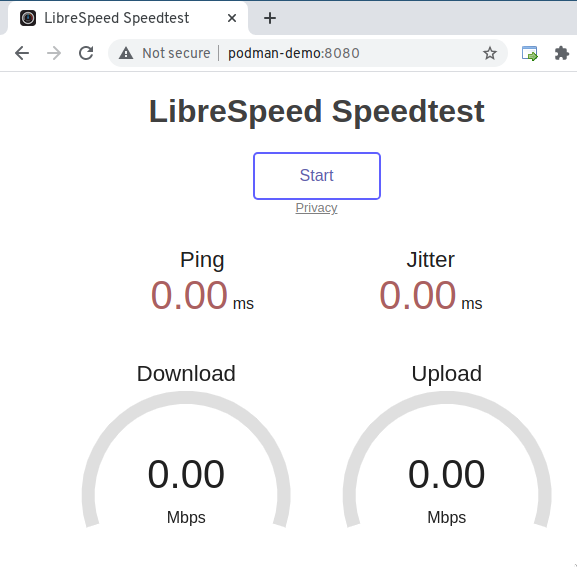Rootless container management with docker-compose and podman

Table of Contents
Everyone has an opinion for the best way to manage containers, and there are many contenders depending on how much complexity you can handle and how much automation you require. One of my favorite ways to manage containers is docker-compose.
Overview of docker-compose #
docker-compose uses a simple YAML syntax to explain what your desired end state should look like. The compose specification covers all of the relevant configurations for containers, volumes, networks, and more. After each change, docker-compose compares your configuration to the running containers and makes all of the required changes.
This provides some advantages over using docker run ... or podman run ...
since you can put the YAML into version control and track your configuration
changes all in one place. I was tracking the configuration in shell scripts that
ran docker with lots of parameters and that became difficult to manage.
What about Podman? #
Podman is a tool for managing containers, much like Docker, but it has some distinct advantages:
- No daemons are needed
- You can run containers as your user, or as root
- The commands and arguments are nearly identical to
docker(no swarm support) - Podman 3 added a complete Docker-compatible API
This last part, the Docker-compatible API is quite interesting and this allows docker-compose to work with podman as well as it does with docker.
Let’s try it out!
Getting everything ready #
Start with a working Fedora 34 system and install some packages:
💣 HEADS UP: The
podman-dockerpackage brings in podman, an alias for thedockercommand that actually runspodman, and the docker-compatible API via a socket. If you want to run podman and docker side by side on the same machine, installpodmaninstead ofpodman-dockerhere. If you had docker installed already, you may need to remove it withdnf remove docker-ce docker-ce-cli.
dnf install docker-compose podman-docker
We’re going to do something different here. Intead of starting the podman socket or docker daemon as root, we’re going to start the podman socket as a regular user. Switch to a regular user and start the socket:
$ systemctl enable --now --user podman.socket
Created symlink /home/major/.config/systemd/user/sockets.target.wants/podman.socket → /usr/lib/systemd/user/podman.socket.
But wait, where’s the socket?
$ ls -al $XDG_RUNTIME_DIR/podman/podman.sock
srw-rw----. 1 major major 0 Jul 9 16:49 /run/user/1000/podman/podman.sock
That’s a podman socket running as my user and exposing a docker-compatible API. 🎉
Time for docker-compose #
Now it’s time to use docker-compose with podman as a regular user and run a container as our regular user.
We can use librespeed for this example, and the LinuxServer librespeed container is a great way to deploy it. It’s a self-hosted speed test application that works well with desktops and mobile devices.
First, we begin with the suggested docker-compose configuration:
---
version: "2.1"
services:
librespeed:
image: ghcr.io/linuxserver/librespeed
container_name: librespeed
environment:
- PUID=1000
- PGID=1000
- TZ=Etc/UTC
volumes:
- librespeed:/config
ports:
- 8080:80
restart: unless-stopped
volumes:
librespeed: {}
Save that as docker-compose.yml in your current directory.
Keep in mind that docker-compose is expecting to find our docker socket in
/var/run/docker.sock, but we’re running the podman socket as our regular user.
Let’s export the DOCKER_HOST variable and run docker-compose to bring up our
new container:
$ export DOCKER_HOST="unix:$XDG_RUNTIME_DIR/podman/podman.sock"
$ docker-compose up -d
Pulling librespeed (ghcr.io/linuxserver/librespeed:)...
10f45b17b9ab: Download complete
f23b92877416: Download complete
a5bf9c523af4: Download complete
00fe9b963179: Download complete
bfafa0ba1dc9: Download complete
c583b34264f1: Download complete
9d26cce56b8d: Download complete
70de87880afd: Download complete
0ad6c2578069: Download complete
a8792749de3b: Download complete
2d31530d2d8b: Download complete
Creating librespeed ... done
$ docker-compose ps
Name Command State Ports
--------------------------------------------
librespeed /init Up () :8080->80/tcp
The container is up and running as our user. Let’s check the nginx process
inside the container to be sure:
$ ps -xu |grep "nginx: master"
major 3805 0.0 0.4 5860 4692 ? Ss 16:53 0:00 nginx: master process /usr/sbin/nginx -c /config/nginx/nginx.conf
Sweet! 🥳
Time for a speed test #
If we’ve come this far, we might as well test our internet speed to ensure the container works!

Remember that we used port 8080 as a replacement for 80 in our docker-compose file to avoid issues with regular users being denied access to create a listener on ports under 1024.
Let’s see how fast my connection is today:

Photo credit: Michael D Beckwith on Unsplash